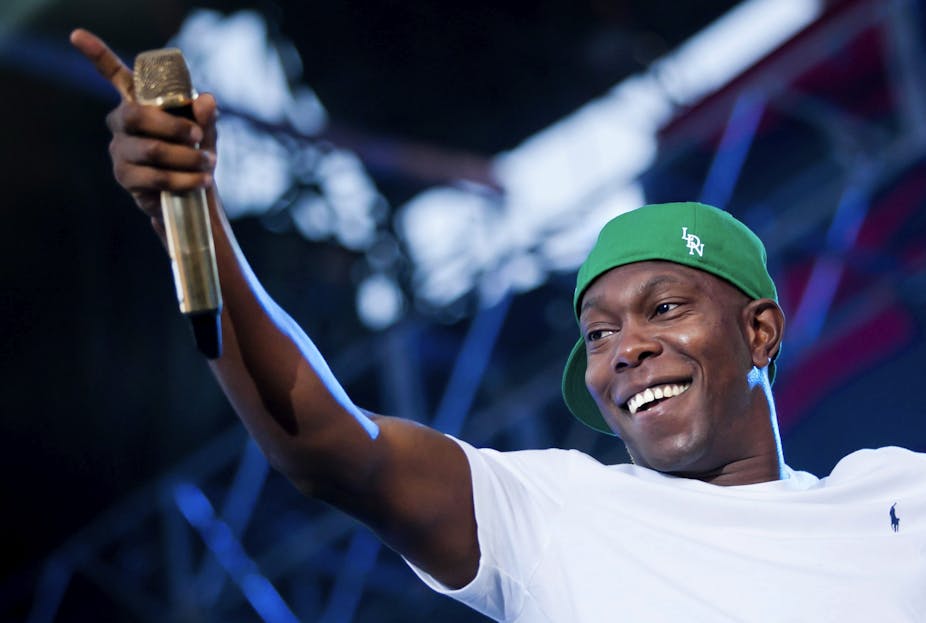From before their election in 1997, New Labour politicians spun an image of Britain that held the promise of prosperity for all. Then we entered a new millennium. For the black community – especially its boys and men – it became clear the promise was as empty as Tony Blair’s Millennium Dome was eventually left.
They were still being denied equality of opportunity. They were still being overpoliced, sometimes fatally. In their quest for economic survival, they were still not regarding each other’s lives as sacred.
For many of the generation coming of age at this time, neither the smooth, luxurious, hip-swivelling sound of late-nineties UK garage, nor the heart-rupturing baselines of jungle drum and bass were apt for how they wanted to express themselves.
With no money for advanced music technology, a skeletal sound emerged from the most basic of DIY music tech. A Sony PlayStation. A mobile phone. A keyboard. Some called it “eskibeat” (cold and emotionless), others dubbed it “sublow” (stripped down and bare).
The tunes were sparse and the vocal delivery raw. Eventually the streets settled on a name: grime.
With an MC origin story that begins in the jungle drum and bass community radio scene and ends in pop rap stardom, Dylan Mills – aka Dizzee Rascal – is sometimes overlooked as a pioneering producer of grime. Developed to deliver the reportage of early-2000s east London life contained in his lyrics, grime was perfect for his urgent, high-pitched, staccato delivery.
Read more: 25 Years of Garage review – music documentary falls prey to the same mistakes that killed the scene
His first album, Boy in da Corner, is celebrating its 20th anniversary in 2023. The album’s unique production, almost entirely crafted by Dizzee, created new sonic boundaries. The record rightfully won the prestigious Mercury Prize in 2003.
The lyrics illustrate what it means to grow up young, black and deprived on the fortress-like council estates of London, many of which have now become gentrified or sold off and demolished to cater more for wealthier residents.
The hyper-local dangers and complexities of the council estate, whether interior (mental health, envy, teenage pregnancy) or exterior (unemployment, racist policing, knife crime), make the tracks sound more like distress calls than semi-autobiographical accounts.
It is clear that Mills is yearning for a better future. His delivery is introspective, brutally honest, audacious.
Boy in da Corner’s track list
In the album opener, Sittin’ Here, Dizzee is hanging outside of the local off-licence, watching the world go by and pondering the state of it all.
’Cause it’s the same old story,
Shutters, runners, cats and money stacks.
And it’s the same old story,
Ninja bikes, gun fights and scary nights.
And it’s the same old story,
Window tints and gloves for finger prints.
Stop Dat is an energising rap battle track. I Luv U and Jezebel discuss relationships within the noncommittal style of the street. Brand New Day aches with nostalgia and longs for a more peaceful life – delivered over a haunting east Asian melody that make the lyrics sound even more tragic that they are already.
Looks like I’m loosin mates,
There’s a lot of hostility near my gates,
We used to fight with kids from other estates,
Now eight millimetres settle debates.
Wot U On? ridicules the narcissism of wearing your wealth. “Love talks to everyone, money talks more,” it opines.
It’s not surprising that the biggest hits from the album are sample-led bangers. The big beat and rock-inspired Fix Up Look Sharp and the rock opera that is Just A Rascal exude the swagger of a teen who grew up on Nirvana, Guns N’ Roses and Iron Maiden, as well as Nas and Run DMC.
The phone message sample at the end of Just A Rascal would prove prescient, as in the summer of 2003 Mills was hospitalised after being stabbed several times at a resort where he was performing in Ayia Napa, Cyprus. Allegedly related to a feud with a rival crew, the brutal attack permanently severed his relationship with former Roll Deep Crew member and collaborator, Wiley.
Boy In Da Corner made young black men and boys feel seen. On its vibrant cover Mills is dressed all in black right down to his Nike Air Max, sitting in the corner of a white floor, fingers making devil horns. The single other colour – yellow – connotes happiness and hazard. Vulnerable, yet perceived by wider society as dangerous.
The rapturous reception Da Boy In Da Corner received from both the estate and the establishment illustrated that black British stories (and therefore black British lives) were important.
It ushered in not only a new exciting sound but a generation of black British artists like Tinie Tempah and Tinchy Stryder. Laying the foundation for them to achieve phenomenal chart success in the music industry mainstream. Not bad for a black boy from Bow.

Looking for something good? Cut through the noise with a carefully curated selection of the latest releases, live events and exhibitions, straight to your inbox every fortnight, on Fridays. Sign up here.

